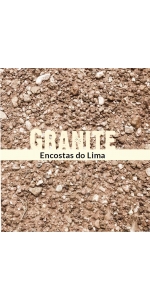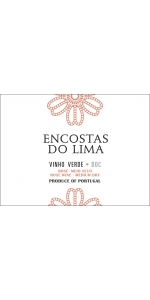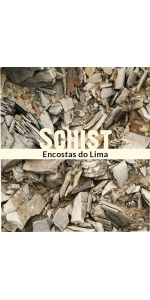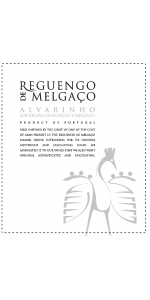Wine from Vinho Verde
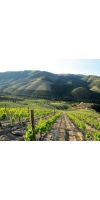
Vinho Verde is one of the sexiest regions for wine in Portugal, and it is easy to see why. Originating the far north of Portugal, Vinho Verde is classified as a modern day region that was designated in 1908. Vinho Verde also includes the old Minho province. Contrary to popular belief, Vinho Verde is not a varietal.
The name translates to, “Green Wine,” but actually means, “Young Wine,” instead of mature wine. Green wine regardless of its color, is meant to be enjoyed within one year of bottling. In 2005, there were more than 30,000 growers in the region.
The growers train the grape vines to produce and grow up fences, above ground, up trees and incredibly, even up telephone poles. This is done so that the families of the growers can use the soil for fruit and vegetable crops as the majority of the growers are also part time farmers. The climate is humid and cool compared to the dry and hot climates in the Douro Valley and central Portugal.
Since the 17th century, wines from Vinho Verde DOC have been exported to Britain. The Romans expanded and promoted viticulture in the Lusitania province. Wines were produced for export as well as local consumption.
Lima Granite Vinho Verde is made from 100 percent Loureiro.
This special project from the Adega Ponte de Lima highlights the diverse soils of the Vinho Verde region. Made from 100% Loureiro grapes, both the Granite and Schist varieties boast a crisp acidity and expressive minerality.
Lima Vinho Verde Granite displays intense floral aromas with great freshness and more accentuated minerality.
Sushi, fish, seafood, cheeses and salads.
Lima Vinho Verde Rose is made from 75% Souzao, 15% Borraçal and 10% Espadeiro.
It is a blend of 75% Souzao (same as Vinhao), 15% Borraçal (which is also known as Caino Tinto) and 10% Espadeiro:
Souzão (or Sousão or Vinhão) is a Portuguese wine grape that is used in the production of port wine. While originating in the Minho regions, it is used primarily in Australia, California and South Africa. In Portugal, it is also an authorized planting in the Douro, and Dão-Lafões area (Vinho do Dão). The grape is known for the deep color it produces in a wine as well as its coarse and raisiny taste.
Caiño tinto (also known as Borraçal) is a red Galician wine grape variety that is also grown in Portugal's Vinho Verde wine region where it is known as Borraçal. In Spain, it is a permitted variety in the Denominación de Origens (DOs) of Rías Baixas and Ribeiro where it produces highly perfumed wines with noticeable tartness and high acidity.
Espadeiro is a red Portuguese wine grape planted primarily in the Minho region for making Vinho Verde. It is also grown across the border, in Spain, in Galicia where it is used to make light bodied wines.
Lima Xisto (Schist) Vinho Verde is made from 100 percent Loureiro.
his special project from the Adega Ponte de Lima highlights the diverse soils of the Vinho Verde region. Made from 100% Loureiro grapes, both the Granite and Schist varieties boast a crisp acidity and expressive minerality.
Lima Schist Vinho Verde displays subtle yet more complex aromas. Full bodied, persistent and engaging.
Sushi, fish, seafood, cheeses and salads.
Fresh with an intense fruity character. Very mineral wine with notes of apple, plums, peach, combined with a still dominant citric profile. Magnificent volume with an elegant and delicious unctuousness. Fantastic finish, long and aromatic. Very good balance between acidity and dryness/sweetness although the wine almost doesn’t have residual sugar.
Alcohol content: 12.5 % Vol.
pH: 3,41
Total Acidity: 6 g/L tartaric acid
Volatile Acidity: 0,36 g/L acetic acid
Average age of the vines is 20 years old, all planted on alluvium (stream deposit) consisting in gravelly and sandy soils.
Grapes were transported to the winery immediately after the harvest in small size boxes. They were smoothly pressed before fermentation in stainless-steel tanks, with temperature control. Selected yeasts were added for the fermentation.
Fish and seafood are strongly associated to the white wine consumption. With Reguengo de Melgaço Alvarinho wines it’s not different. They usually make wonderful pairings with fish and seafood main courses.
However, other pairings are also recommended.
Salads, fruit, white meats, are also great companions for Reguengo de Melgaço Alvarinhos. The volume, attack and intense flavour of these wines allow even more unconventional pairings for white wine, such as heavier meat plates.
- back
Selected Options
Regions
Categories
Pricing
Countries
Regions
Grape Types
Wineries
Organic/Free Shipping
Dr. Loosen Wehlener Sonnenuhr Riesling Auslese is made from 100 percent Riesling.
An endlessly energizing late-harvest Riesling from a selection of botrytis-affected grapes harvested in the “sundial” vineyard. This precipitously steep, rocky vineyard consistently yields some of the most elegant and sophisticated white wines in the world. Auslese means “selected from the harvest,” and is a luscious sweet wine made from very ripe clusters that are about 50 percent affected by botrytis. The resulting wine is dense, intensely flavored and rich on the palate, but retains the elegant structure that is characteristic of this great site.
Review:
Rich, but very elegant and creamy with beautiful, peachy character and lovely, floral-honey notes. Long, very silky finish. Drink or hold.
James Suckling 95 Points
This is a single vineyard, from the parcel "El Nogal" located in the town of Mambrilla de Castrejon grown at 850 meters above sea level. (2750 feet).
A hillside of tinto fino vines red in the village of Mambrilla, a short distance from the winery. Uninterrupted views of the Duero, the wind stirring the airy branches of the large walnut tree that guards the vineyard. A place with a special gift. Its sandy, stony soils, a feeling of harmony and a special microclimate: everything seems to enhance the talent of its surroundings.
We have been vinifying the evocative grapes of this plot for the past few years to produce an endlessly charming wine. Overwhelming, powerful and exquisite. With a vitalising force.
Review:

